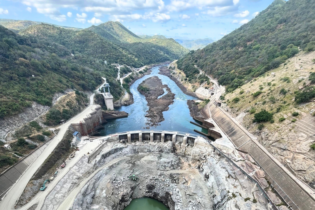It was with the powerful phrase in mind: “What if the only way to predict the future is to design it,” that Jeff Robinson, Aurecon’s Sustainable Buildings Group Leader, presented at the Green Building Council South Africa’s annual convention as one of the event’s innovation speakers.
“Our current world population is over 7 billion and it is projected that by 2050 it will be 9.4 billion, with 70% of the population living in cities,” said Robinson. “How these future cities look, feel and operate is set to have a significant effect on local, national and international economies. This in itself is a very loud call for a successful urban planning agenda which empowers us to envisage what we want and need for our future cities and put in place mechanisms that will support this vision.” Designing a triple bottom line sustainable future At the outset of his presentation, Robinson cautioned that “Designing a triple bottom line sustainable future, which considers people, planet and profit, the ‘three pillars of sustainability’, is not easy but is necessary if we are to overcome the current and future problems of rapid population growth and climate change, together with resource and ecological depletion.” He went on to explain that, particularly within an African context, “We cannot solve Africa’s problem using the same thinking we did in the past based on inappropriate first world solutions.” Casting a vision In Australia, Aurecon has participated in the Visions and Pathways research programme that brings academia, government and industry together to plan a low carbon future for Australians. This was done through an extensive workshopping process which saw participants devise alternative sustainable pathways for the cities of Melbourne and Sydney. With a vision defined, it is then possible to look at the steps needed to achieve this alternative future (“backcasting”). “If we are to engage in envisioning and co-designing a sustainable future for African cities, we need to envisage a sustainable, low carbon future using the best minds available and plan to realise that vision,” said Robinson. Making a difference locallyHe then introduced ‘Our African City’ to the audience saying, “Much like the Australian Visions and Pathways research programme, this collaborative initiative has been formed to address the challenge of designing better futures by assisting the Government and the private sectors to work together to advance successful, integrated urban development in Africa.”
The Our African City initiative was initiated and launched by Aurecon at the Institute of Municipal Engineering of Southern Africa (IMESA) conference in Cape Town on 28 October 2015 in partnership with PricewaterhouseCoopers (PwC) and the South African Local Government Association (SALGA). “Essentially, it’s a dialogue on transformation that intends to craft a vision of what future African cities should look like. It will see the public and private sector join hands and work together to grow a successful economy,” said Robinson. Innovation and advancing the African agenda Encouraging the audience to become involved in the initiative, Robinson added that it was everyone’s responsibility to remain at the forefront of shaping Africa’s destiny through innovation and advancing the African agenda. “Imagine a future in which we use the latest thinking to leapfrog solutions – such as moving from a 3G telephone network to a better, cheaper and faster 5G network. The same may be true of an energy grid rolled out using solar power with battery technology to replace a traditional centrally distributed grid, which is currently failing to meet the energy needs of a rapidly growing population.” “We need to start thinking about our future in this context. If we don’t, we run the risk of losing out on the opportunity to shape our future reality,” he concluded.







